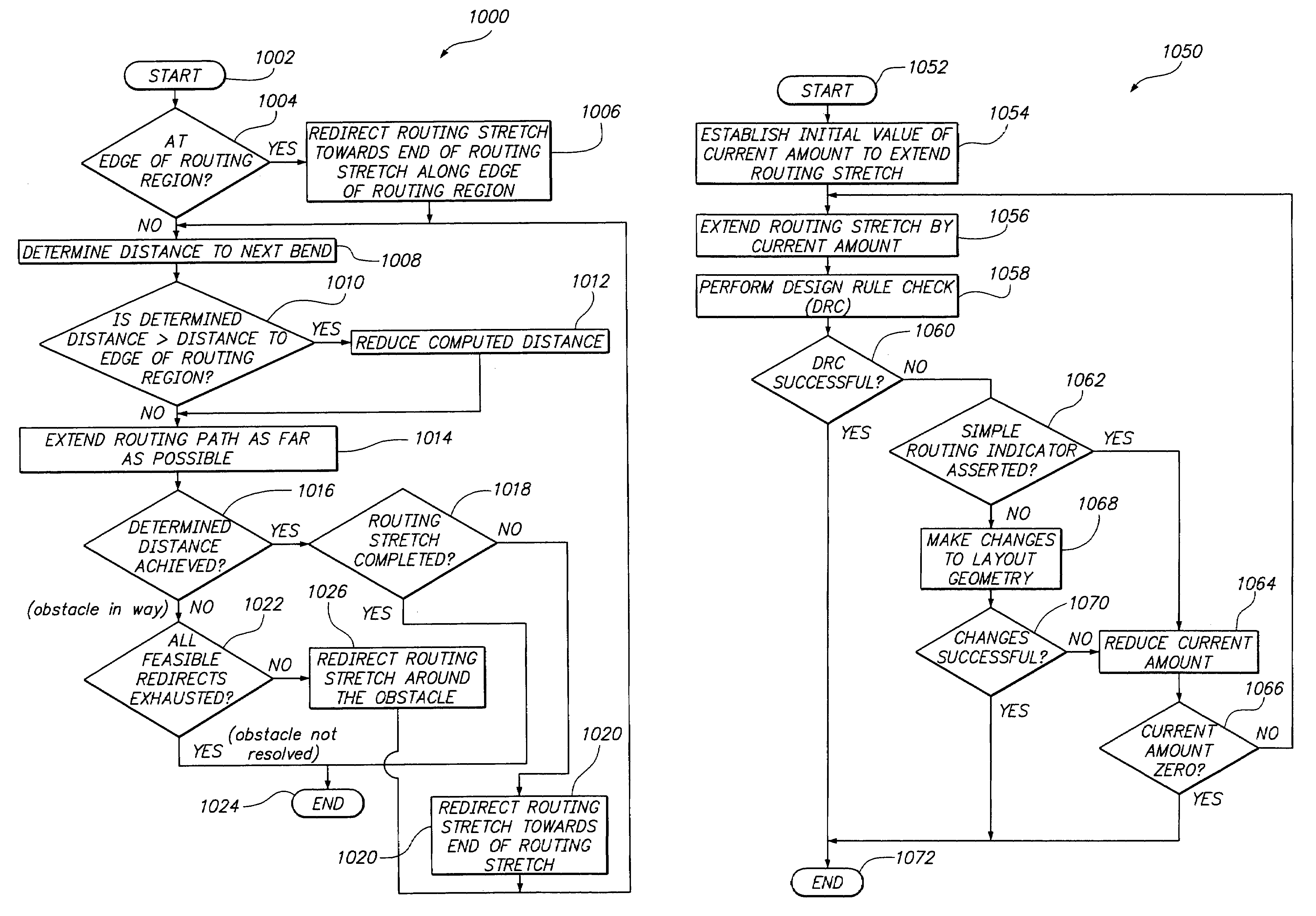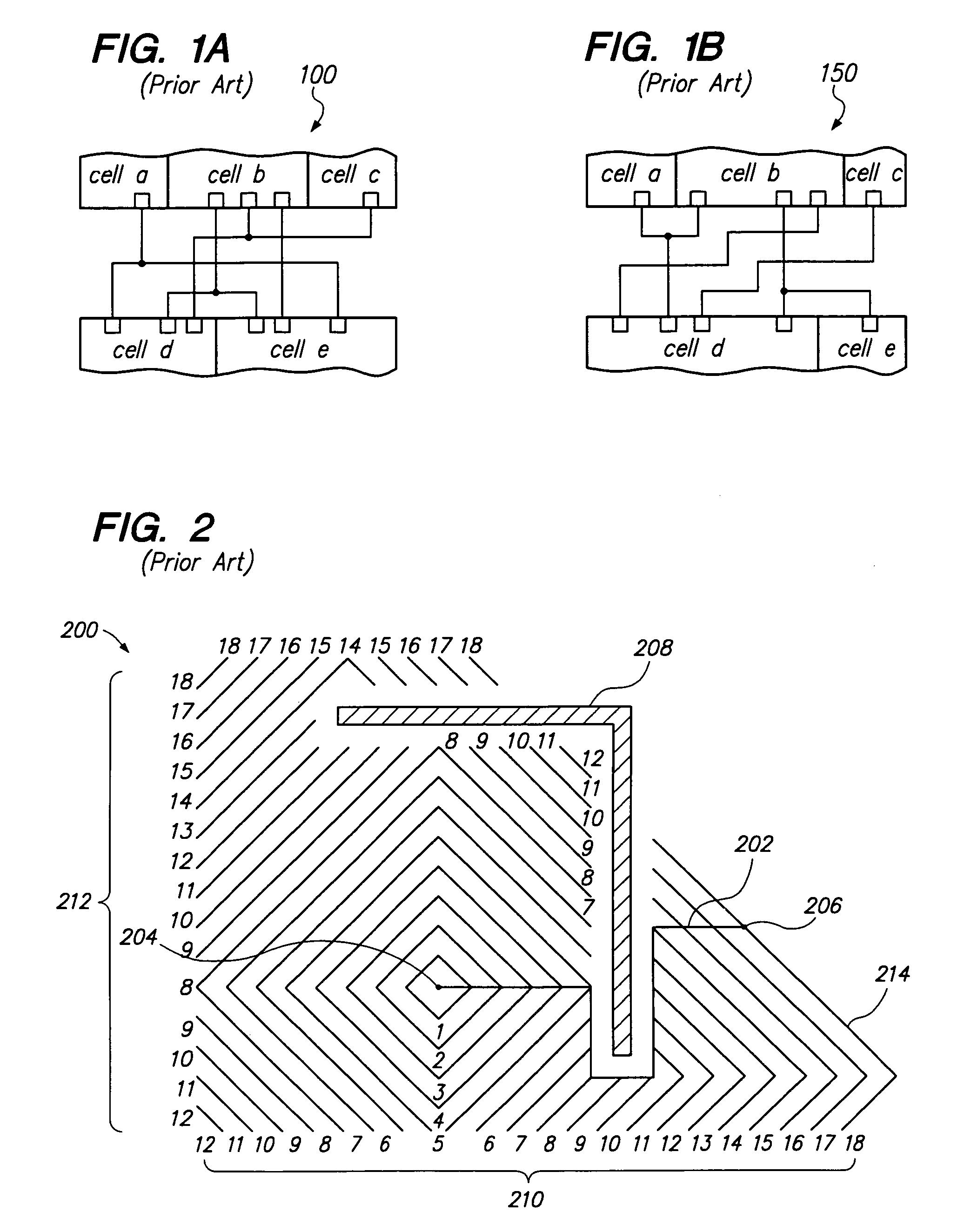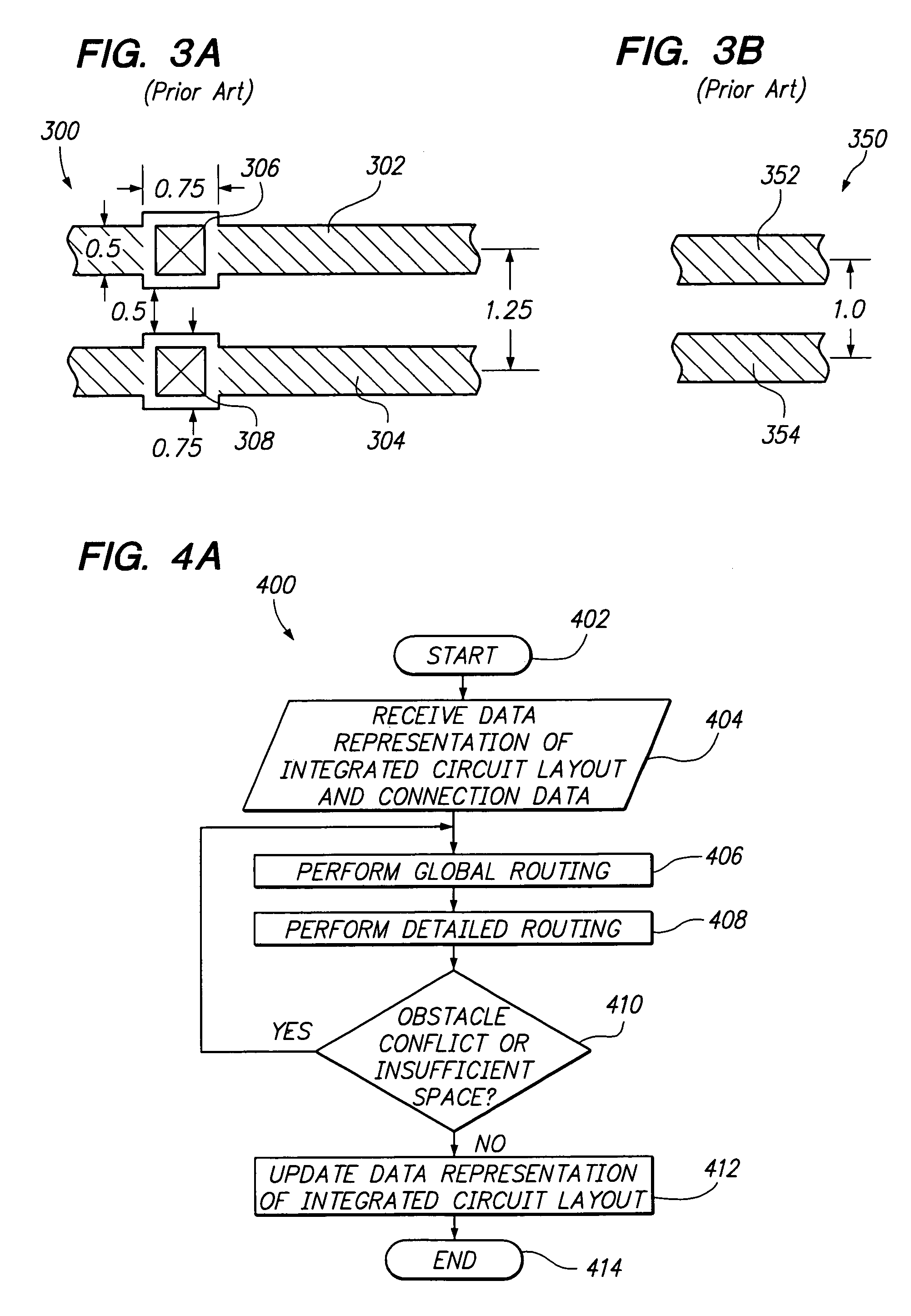Approach for routing an integrated circuit
a technology of integrated circuits and routing lines, applied in the field of integrated circuit routing lines, can solve the problems of inability to use manual methods, and inability to meet the needs of large integrated circuits containing millions of transistors
- Summary
- Abstract
- Description
- Claims
- Application Information
AI Technical Summary
Benefits of technology
Problems solved by technology
Method used
Image
Examples
Embodiment Construction
[0062]In the following description, for the purposes of explanation, specific details are set forth in order to provide a thorough understanding of the invention. However, it will be apparent that the invention may be practiced without these specific details. In other instances, well-known structures and devices are depicted in block diagram form in order to avoid unnecessarily obscuring the invention.
[0063]Various aspects and features of example embodiments of the invention are described in more detail hereinafter in the following sections: (1) introduction; (2) functional overview; (3) applicable principals; (4) global routing; (5) detailed routing; (6) obstacle and insufficient space resolution; and (7) implementation mechanisms.
1. Introduction
[0064]A computer-implemented approach for routing an integrated circuit using non-orthogonal routing is described. The approach is applicable to both intra-cell and inter-cell applications and can be adapted for use with orthogonal routing ...
PUM
 Login to View More
Login to View More Abstract
Description
Claims
Application Information
 Login to View More
Login to View More - R&D
- Intellectual Property
- Life Sciences
- Materials
- Tech Scout
- Unparalleled Data Quality
- Higher Quality Content
- 60% Fewer Hallucinations
Browse by: Latest US Patents, China's latest patents, Technical Efficacy Thesaurus, Application Domain, Technology Topic, Popular Technical Reports.
© 2025 PatSnap. All rights reserved.Legal|Privacy policy|Modern Slavery Act Transparency Statement|Sitemap|About US| Contact US: help@patsnap.com



